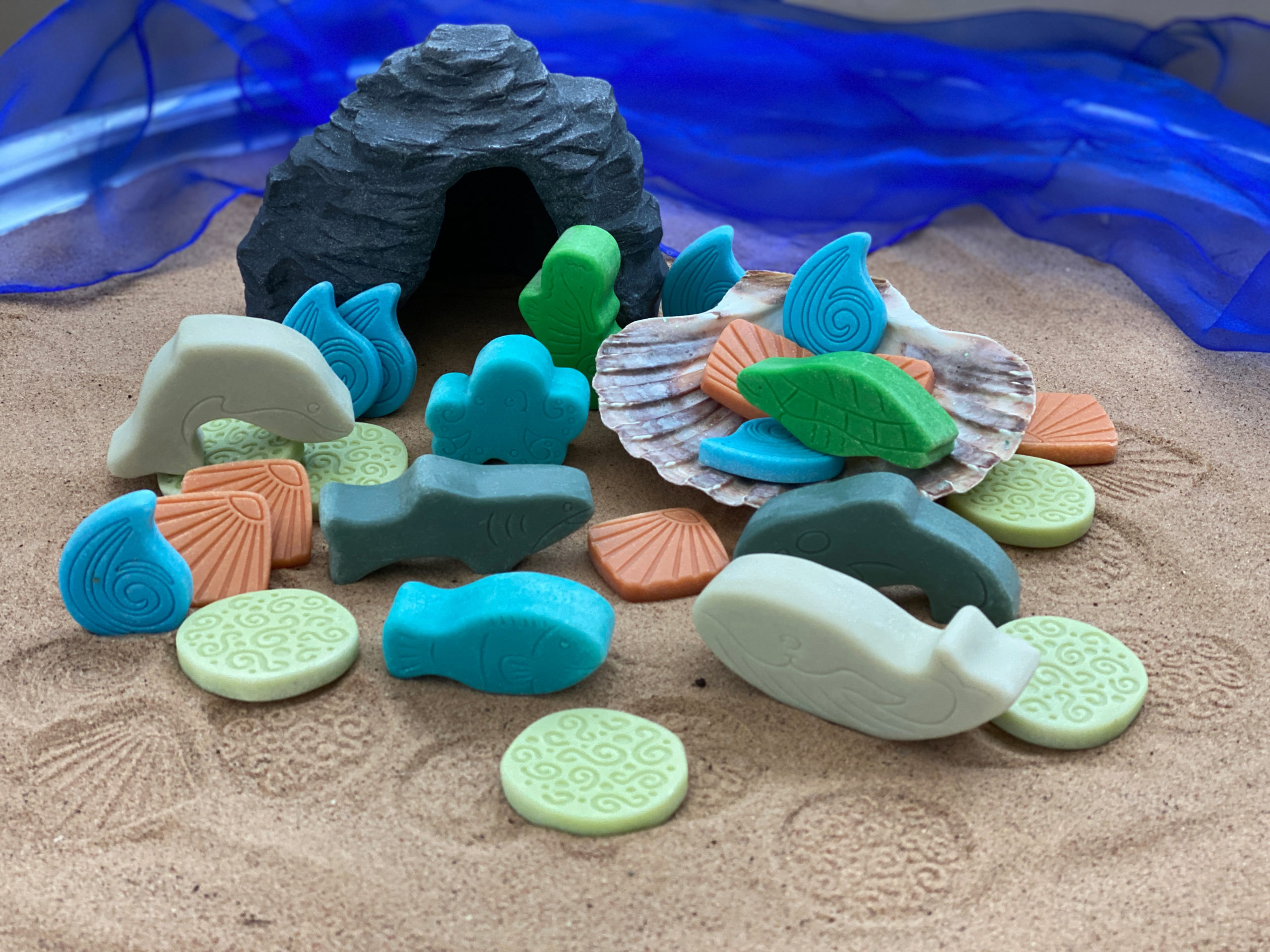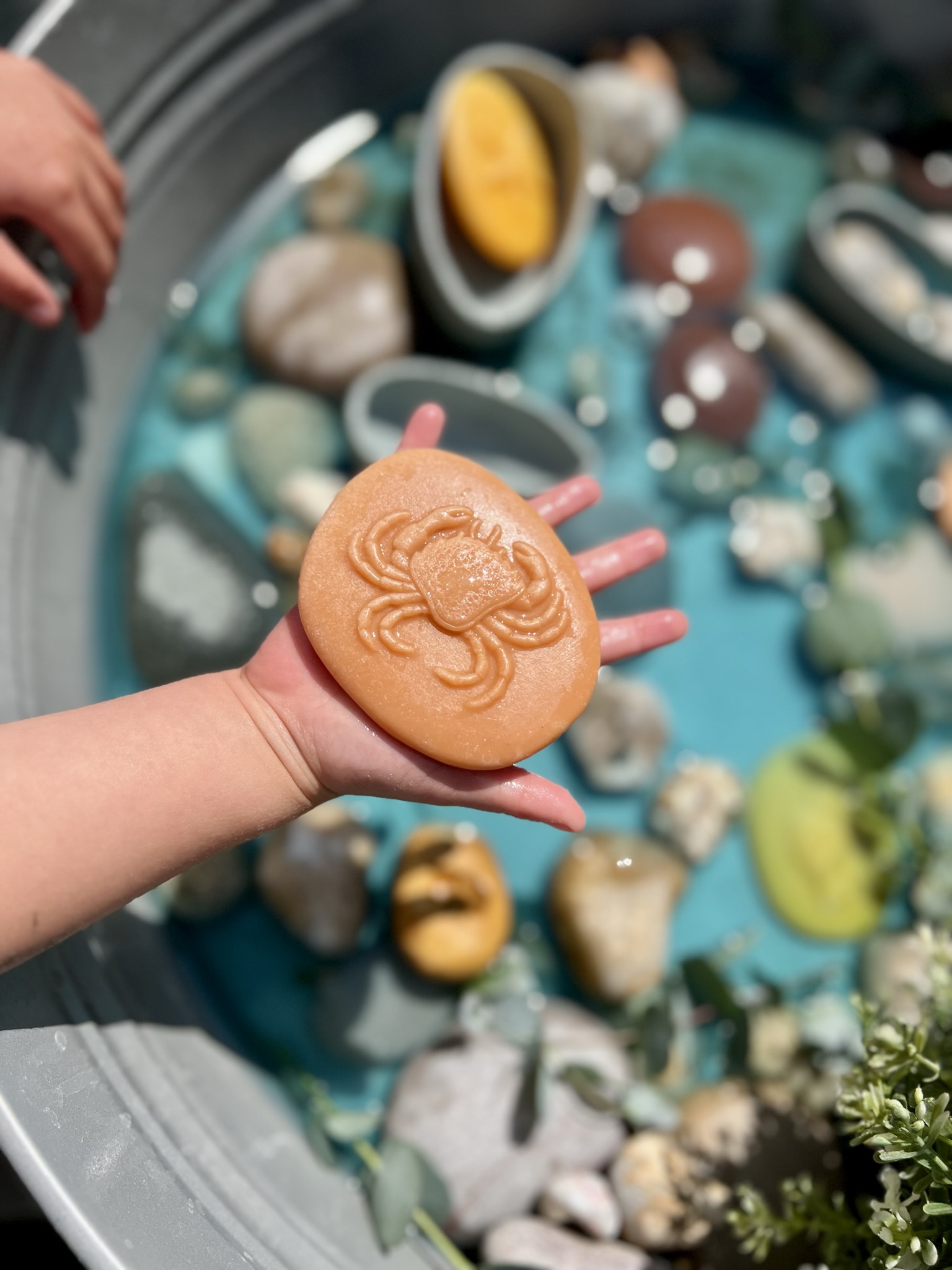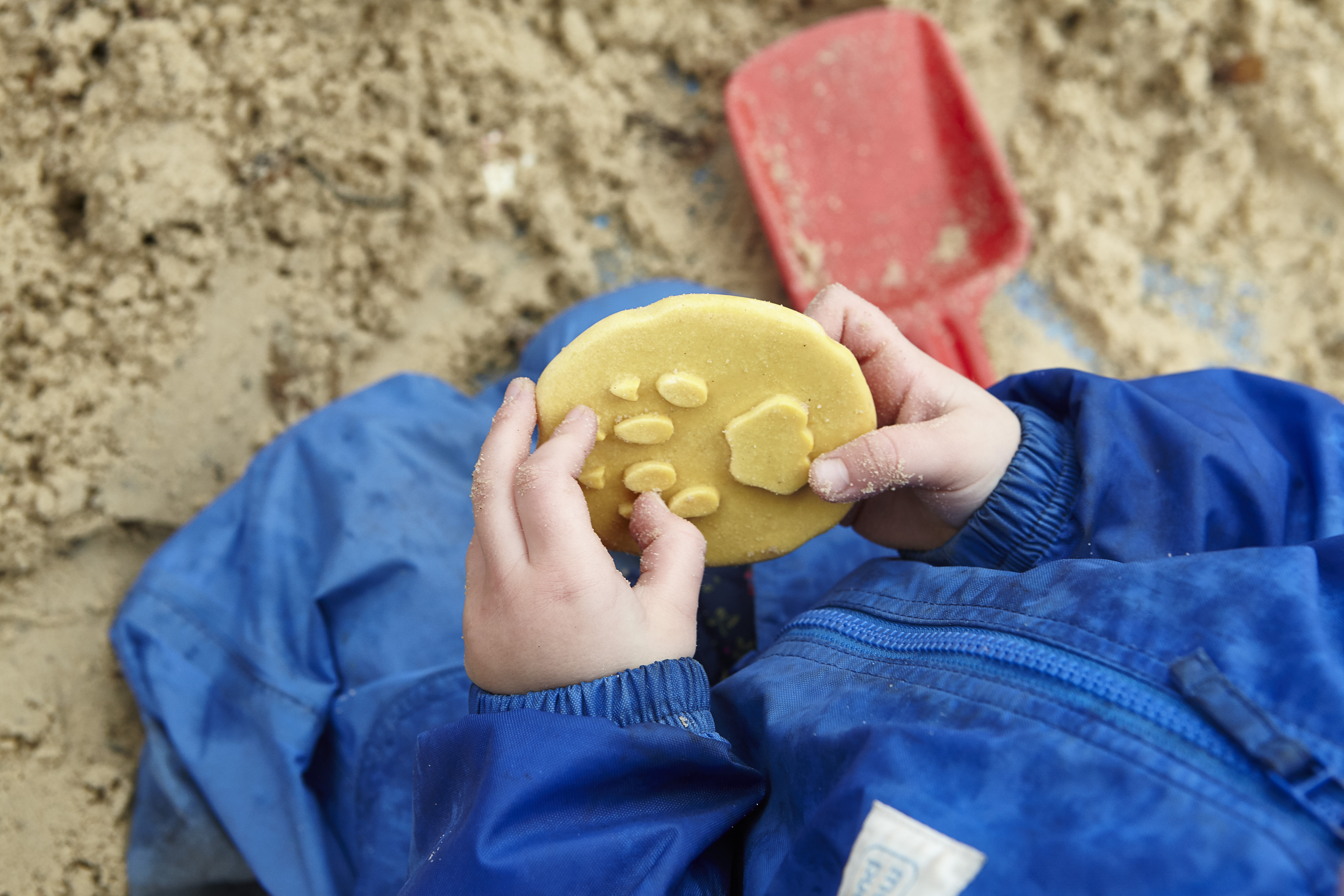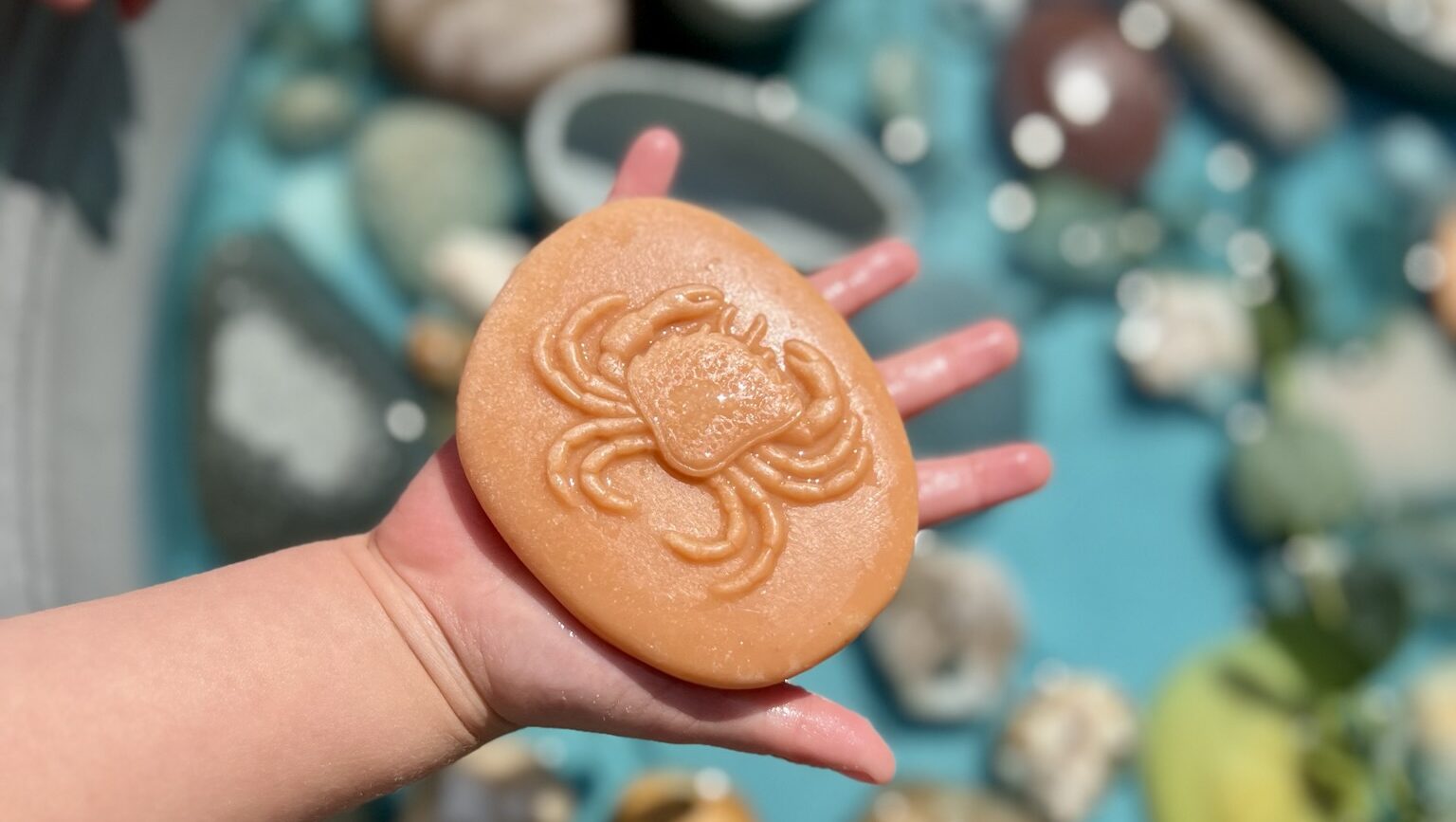While we all like to be beside the seaside, it’s not always conveniently near us! Bring the beach to your setting with these exciting ideas.
DIY beach

Lay a piece of tarpaulin or similar on the ground and place wooden sleepers or other pieces of wood on its edges to create an enclosed space. Fill the area with sand to make an instant beach! If you can persuade a local builders’ merchant to donate some pebbles and gravel, you can use these materials to create a shingle part of the beach. Decorate the wooden boundary with shells. Fishmongers, supermarkets and local fish restaurants will often donate shells that might otherwise be thrown away. Give them a good clean before using them. You can also buy shell collections cheaply online or in discount stores.
Make it comfyFor those children who need a quiet space – don’t we all at times – adding some deckchairs, picnic blankets and towels to the beach will help them to relax and reflect. Include some boxes and cutlery to use for seaside picnics – encouraging children to create their own baskets works well too. On hot days, some umbrellas are useful in creating shady spots to sit.All these additions to the beach also make it the perfect setting for seaside role play. The children will imagine all sorts of scenarios to explore on the beach: family trips, hunting for treasure, lounging in the sunshine.
Seaside plantingTo make your beach even more attractive, add some seaside plants. While an online search for suitable plants will yield examples, if you can find someone to come in and work with the children this is even better. A local gardening business, garden designer or garden centre might be willing to come in to help with planting grasses and flowers in borders or ‘beachy’ receptacles, such as buckets, watering cans, wellies. Make sure you take advice before planting anything to ensure your choices are safe and pose no danger.
Create a mini-beach
If you don’t have enough space for a large beach, how about creating mini ones? Fill some shallow trays and bowls with sand to create mini-beaches. The children can add what they like to their beach to bring the seaside to life.

You could have the following available for use:
- blue fabric for the sea
- gravel
- small pebbles
- plant cuttings
- shells
If you provide suitable play figures, these mini-beaches are ideal for small-world adventures based on big ideas.
Rockpool rumpus
Looking in a rockpool is fascinating for children and adults. You see a whole world of living things going about their business. To capture some of this excitement of discovery, create home-made rockpools. Fill a bowl or deep tray with water and add some clean pebbles or rocks to create a rockpool environment. Fill the pool’s nocks and crannies with some small-world rockpool play figures. Add clean shells to complete the look. Leave the rockpool available with some books on the seashore for the children to explore.

Sensational sandMaking multi-coloured sand is simple and inexpensive to do. All you need is sand, food colouring and some food bags. Place some sand in a bag, add some drops of food colouring – the amount depends on the volume of sand used. Seal the bag and shake it, massaging the sand between your hands until it changes colour. Add more food colouring if you need a stronger colour. Repeat with other sand samples and different food colourings. Children can use these samples to create layers of different coloured sand in clear beakers or jam jars to create beautiful effects.
Sand artThere are many examples of sand art on the Internet, including elaborate sandcastles, sculptures and geometric shapes marked in the sand using a rake. All these images will inspire children to become sand artists themselves. With the beach set up (or a sand tray), leave suitable resources nearby for the children to access easily and use. Include buckets, spades, rakes, some water, decorative items (pebbles, shells, driftwood). Leave print outs in the setting for inspiration. Take photographs of the sculptures as a record. Invite family members to visit your sand sculpture gallery to see the children’s artwork.
Beach caféInvite the children to design and build a beach café. If you have a mud kitchen or similar outdoor space, convert this into the café. The children might want to create some bunting, devise a seaside menu, create their own beach-friendly snacks, mix up some ice creams to scoop into bowls. Provide some seating for customers. The café staff can take orders and bring the food to the tables. Other children can be at work in the kitchen using sand, mud, water and other natural materials to create the seaside snacks.This is good fun on a day when you have family visiting your setting. You could open the café on the day of the sculpture gallery, with the children designing invitations to send out and a special menu for the beach café.
Pebble artYou can find spectacular examples of pebble art online; patterns drawn on stone using marker pens or gel pens. Make sure they are appropriate for children to use safely. They look beautiful when put together as a large display.Leave some pebbles and suitable pens out on a table for the children to use, adding a selection of example images to get them thinking. Gather pebbles as they are created and lay them out in a growing mosaic for others to admire.
Sandprints
Wet some sand so that it retains the handprint of a child when they press into it firmly. Mix up some plaster of paris as per the product’s instructions. Pour enough plaster into the handprint to fill the depression and leave it the required time to dry. Once set, ease the plaster out of the sand. You should have a handprint to display alongside a photograph of the related child. This can be repeated so that you build up a record of all the handprints of children and adults in your setting.

Another idea could be to leave intriguing footprints in the sand – what animal could have left them? What were they doing and where were they going? There are so many stories to tell!

